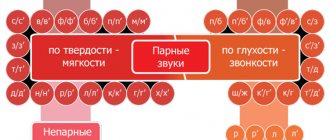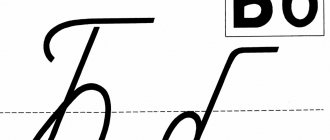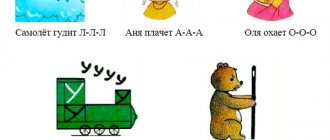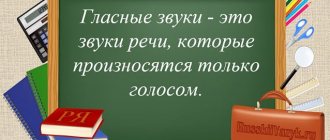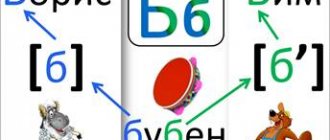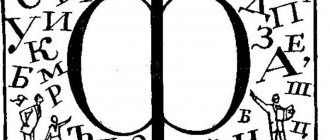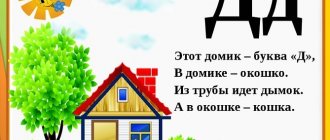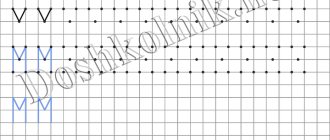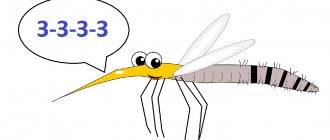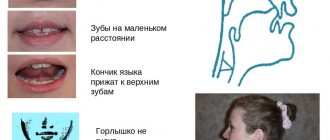Consonant sounds [s], [s'], letters C, s
We open the calendar and it’s autumn again. More precisely, September. September is the very first month of autumn. In September the first bell rings and many boys and girls go to school. At the forest school, the first bell also rang, and many animals sat down at their desks and began to study. And the wise owl began to teach the forest animals.
̶ Today in the lesson we will study the letter c
.
And we, together with the forest animals and the owl teacher, will study the letter c
. But first, let's get acquainted.
So. Pupils of 1st "A" class are: the squirrel Strelochka, the wolf Whistler, the hedgehog Strongman, the boar Senya. And of course, the teacher of 1st “A” class is an owl, Sonya Savelyevna (By the way, we already know the letter A!).
So, the names of the teacher and students begin with the sounds [s], [s']
.
And we remember that all sounds in writing are indicated by letters, and all names and nicknames of animals are written with a capital letter
.
This means that the sounds [s], [s']
in writing can be indicated by
a capital letter s
.
And the sounds
[s], [s']
in writing can be indicated by a small
letter s
.
For example, in the words cheese and seeds.
So. Let's remember. We pronounce and hear sounds, and we see and write letters.
̶ Interesting, but the letter s
does it mean a vowel or a consonant?
̶ Good question Arrow. Now let's think together. Let's try to sing the sounds [s] and [s']
: [s-s-s], [s'-s'-s'].
These sounds cannot be sung. Our teeth and tongue prevent air from passing freely in the mouth and an obstruction occurs. Which means these sounds are consonants
.
̶ Sonya Savelyevna. Why are all sounds blue-green and indicated in brackets?
̶ All sounds are always written in square brackets so that they can be distinguished from letters. And the color is blue-green, probably because consonant sounds can be hard and soft.
To better remember, we use letters that represent hard sounds.
, make it blue, and pronounce it firmly.
For example, in the name Sonya, the sound [s]
is pronounced firmly and is indicated in writing
letter
S. And in the name Senya,
s ']
is pronounced softly and is also indicated in writing
by the letter S. Therefore, we will make the letters that represent soft sounds green. Moreover, we will add an icon that looks like a comma to the soft sound. It shows that this sound is soft.
Consonant sounds can also sound loud or dull. Listen to how dull the sound [ssss]
or
sound [s'-s'-s']
.
And you guys have to remember that the sounds [s], [s']
can only be
voiceless
.
Letter C
can be large (called
capital
) and small (called
lowercase
). We looked at how the letters are written, and now we will find out in what cases these letters are written.
We remember that with a capital letter
First names, patronymics, and surnames of people, names of animals are written.
also with a capital letter
.
And
many other words are written with a small For example: table, tablecloth, samovar.
Still with a capital letter
words are written at the beginning of a sentence. For example: September is the first autumn month.
̶ Now we'll play a little. I will tell you riddles, and you will tell me the answers. So, let's begin.
They are standing in the woods, wearing orange socks, dear sisters, their names...
̶ Chanterelles.
I am growing in a red cap Among the aspen roots, You will recognize me a mile away, My name is...
̶ Boletus.
After the rain, the girlfriends settled at the edge of the forest. Multi-colored hats are the most noticeable.
̶ Russula.
̶ Well done. Now let's think about which words contain the letter s
does it mean soft sound?
̶ In the word chanterelles.
̶ And also in the word boletus. Letter c
denotes a soft
sound [s']
.
Right. And let’s not forget, we’ll mark these letters in green. And in the word russula the letter s
denotes a hard
sound [s]
. And let's mark it in blue.
So we got acquainted with the consonant sounds [s], [s']
, which in writing are designated by a capital
letter C
and a small
letter s
.
And in order to better remember the letter s, you can remember the crescent moon in the dark sky, which is the letter s
hung over the house.
What's wrong with these sounds?
Why these particular sounds? Because we often replace them with one thing - Russian /a/, which creates our rather recognizable accent ( /æ/ can also be replaced with Russian /e/) .
Before I begin, I’ll immediately make a reservation that I will not dwell on the rules of reading : the question is quite extensive, and the purpose of the article is to “train” the correct pronunciation of the sound itself. Second disclaimer: the article will use the British version of the pronunciation of words (below I will indicate which words we are talking about).
Sounds
Speech sounds are different from all other sounds in that they form words. Sound is the smallest basic unit of language, along with words, phrases and sentences. But, unlike them, sound has no semantic meaning. But it is thanks to sounds that we distinguish between the words that we hear and pronounce: house [house] and rum [rum] - the difference is in one sound. Sounds create the sound shell of words and thereby help to distinguish words from each other, i.e. perform a meaning-distinguishing function. Using speech sounds, you can turn one word into another: suk -luk - knock - tok - rock - mouth - rum - tom - com -... (when one sound changes, the word changes).
The words differ:
- the number of sounds they consist of: crow (6 sounds) – funnel (7 sounds), spore – sport;
- a set of sounds: the difference is in one sound: lemon [l'imon] - estuary [l'iman]; port [port] - cake [cake], onion [onion] - bough [bough];
- difference in several sounds: tan [tan] – fence [fence]; beans [beans'] – password [password'];
The formation of sounds and their classification.
Speech sounds are formed during exhalation: a stream of air exhaled from the lungs passes through the larynx and oral cavity. Air vibrations and the work of the speech apparatus (larynx with vocal cords, oral and nasal cavities, palate, tongue, lips, teeth) produce sound.
Tones (voice) and noises are involved in the formation of speech sounds. When the exhaled air passes through the tense vocal cords in the larynx, causing rhythmic vibrations of the cords, a voice (tone) is produced. Noise is formed in the oral cavity when the exhaled air overcomes obstacles (gap or closure) that are formed by the lower lip or tongue when they approach or close with the upper lip, teeth or palate.
When exhaled air passes without obstruction through the larynx between tense vocal cords and through the oral cavity, which can change its shape, vowel sounds . They consist only of voice, they are the most sonorous. If you put your finger to the larynx and pronounce the vowel sound [a], [o], [u], [i], [s], [e], you can feel the vocal cords tremble. Vowel sounds can be sung.
If the exhaled air meets an obstacle in the oral cavity, then consonant sounds . Both voice and noise already participate in their education. Consonant sounds, in the formation of which voice and noise are involved, are called voiced . If the voice prevails over noise in the creation of sound, then such voiced consonant sounds are sonorant . Dull sounds are created only by noise without a voice (the vocal cords are relaxed and do not tremble).
Speech sounds by degree of sonority (by the amount of voice and noise):
- vowels: [a], [o], [u], [i], [s], [e] – only the voice is involved in their formation;
- voiced: sonorant consonants: [m], [m'], [n], [n'], [l], [l'], [r], [r'], [y'] – voices more than noise, always voiced, unpaired voiced;
- noisy voiced consonants: [b], [b'], [v], [v'], [g], [g'], [d], [d'], [z], [z'], [ zh] – there is more noise than voices, paired voiced (in speech sometimes a voiced sound [zh'] is used: jury [zh'uri], reins [vozh'i]);
Please note that vowel and consonant sounds (voiced and voiceless) differ in the degree of participation of voice and noise, according to the method of formation (obstacles are encountered or not encountered in the oral cavity when exhaling air).
Voice (tone) is necessarily present when pronouncing vowels and voiced consonants. When pronouncing voiceless consonants, the vocal cords are relaxed and a voice is not formed.
The specific sound of each vowel depends on the volume and shape of the oral cavity - the position of the tongue and lips.
The sound of each consonant depends on the functioning of the speech organs. Consonant sounds are sonorant and noisy, and noisy sounds are voiced and voiceless, depending on the participation of voice and noise in their formation. Consonants also differ in the place of noise formation, depending on where and by what organs of speech the obstacle through which exhaled air passes (labial, lingual, etc.) is formed.
Consonant sounds are divided into hard and soft . Soft sounds differ from hard sounds in that during their formation the tongue performs an additional action: its middle part rises to the hard palate.
Vowel sounds
The pronunciation of Russian vowel sounds is different in that the flow of air, when exhaling and pronouncing a particular sound, does not encounter obstacles in the mouth.
Say: “Eeeee.” The sound passes freely, only our voice sounds. There are six vowel sounds in the Russian language: a, o, u, i, ы, e.
These sounds are called ten vowels.
Exercise
Name the vowel sounds in these words, indicate how many vowel sounds there are in the word.
- Brand.
- Life.
- Goal.
- Island.
- Echo.
- Lesson.
- Floor.
- Wolf.
Answer:
- Brand, 2 sounds a.
- Life, 1- and
- Goal, 1st.
- Island, 2 sounds o.
- Echo, 2 sounds - uh, oh.
- Lesson, 2 sounds - u, o
- Paul, 1 –o.
- Wolf, 1 –o.
So, there are six vowel sounds, they are pronounced with one exhalation and without obstacles in the mouth.
